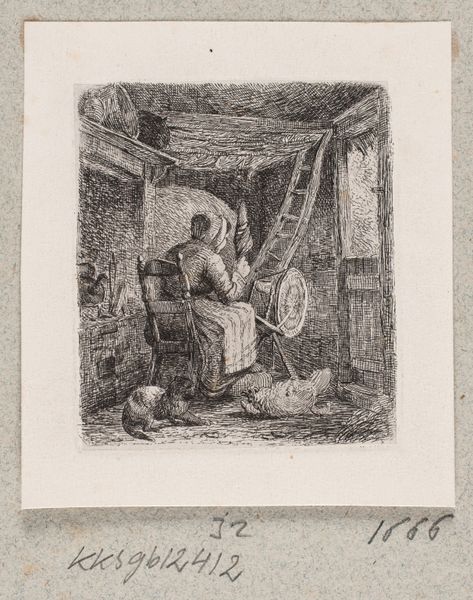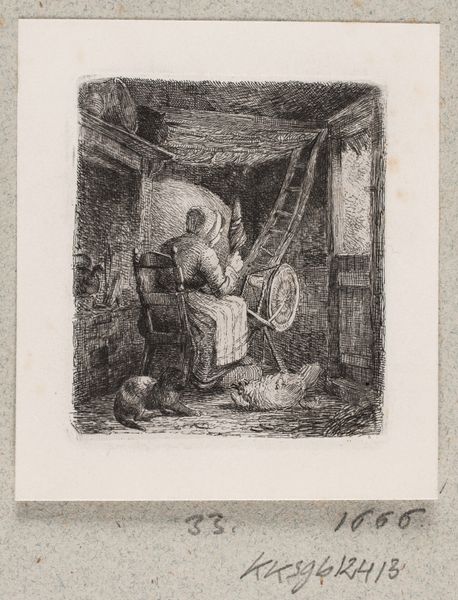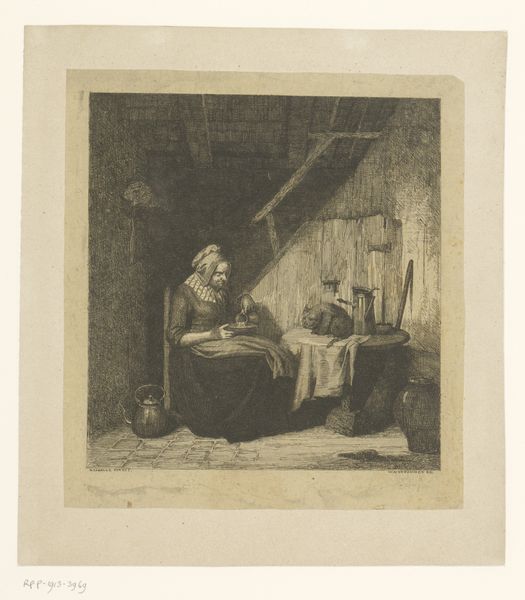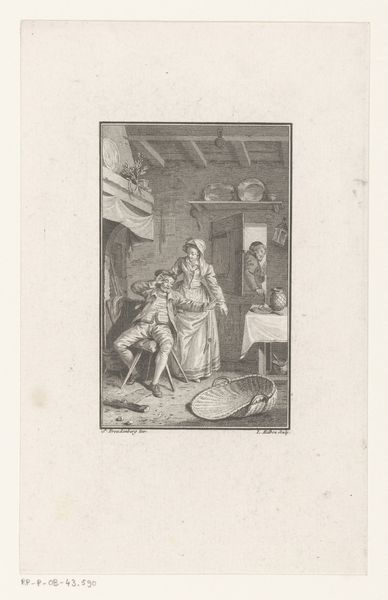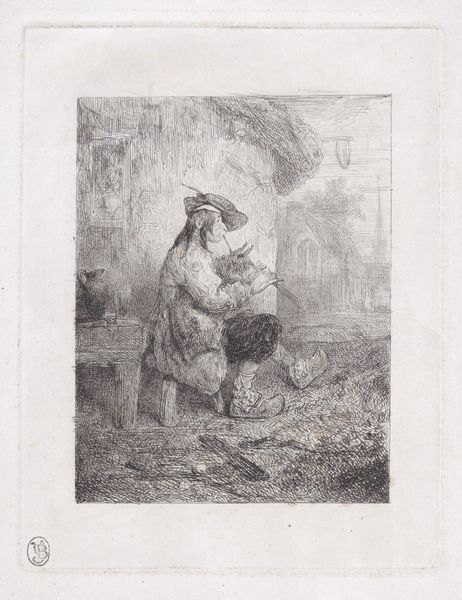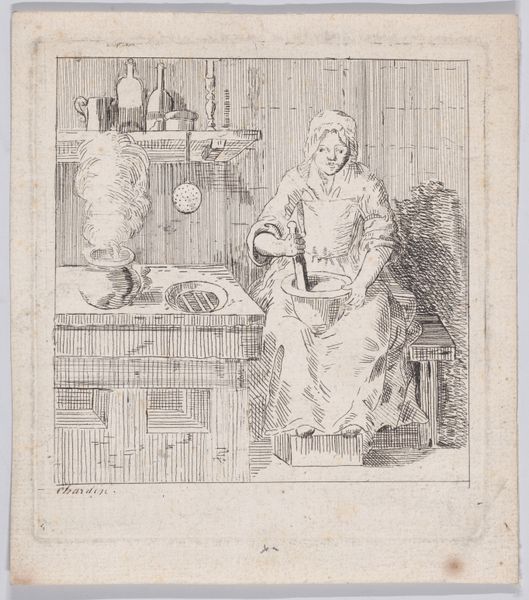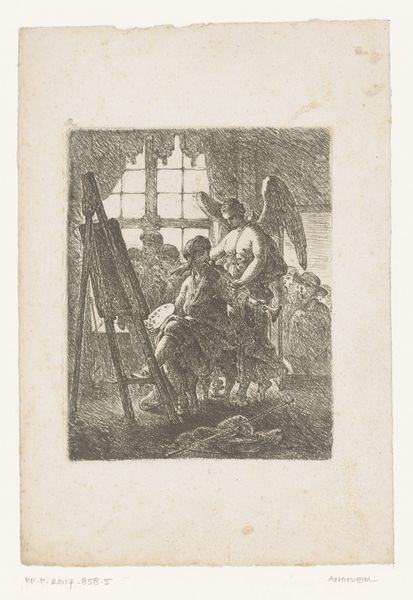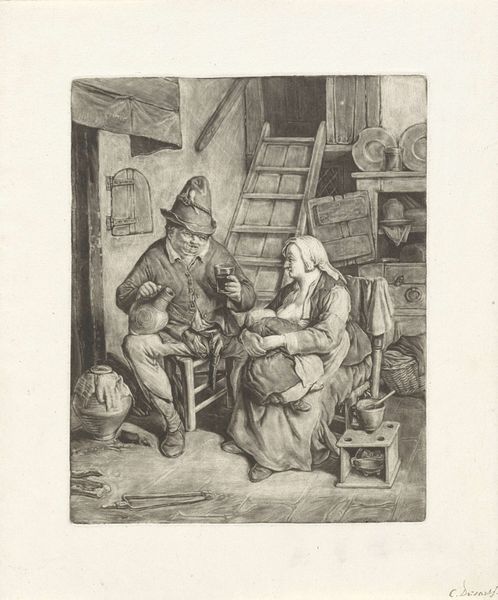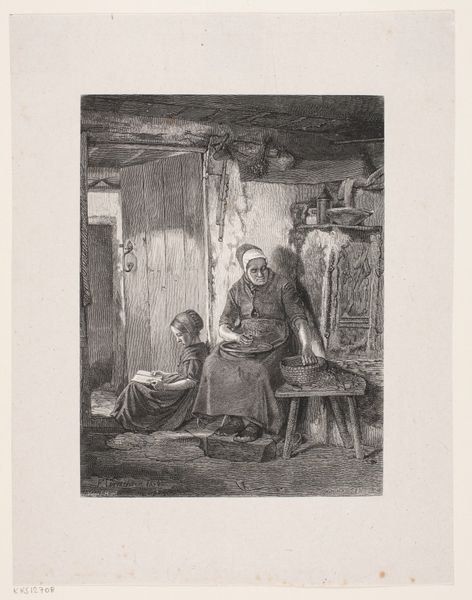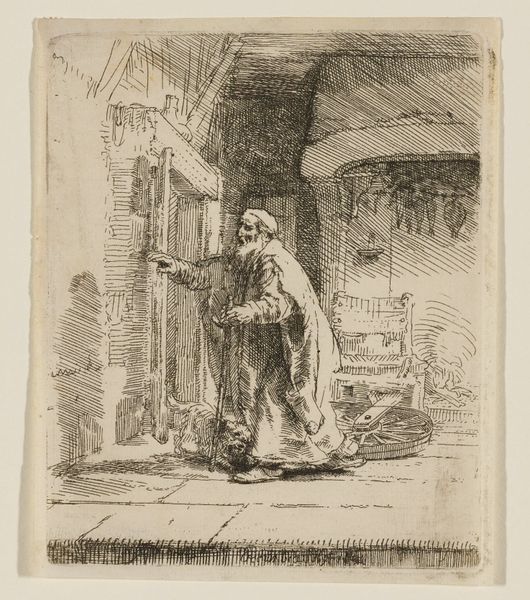
drawing, print, engraving
#
drawing
# print
#
genre-painting
#
engraving
#
realism
Dimensions: 69 mm (height) x 60 mm (width) (plademaal)
Editor: This is "En Spindende Bondekone," or "A Spinning Peasant Woman," an engraving by Johannes Wilhelm Zillen from 1850. It depicts a woman at a spinning wheel in what appears to be a humble dwelling. There’s a stark simplicity to it, yet the details of daily life feel rich. What do you see in this piece? Curator: I see a potent commentary on gender and labor during the mid-19th century. Consider the Realist movement at that time; it sought to depict the unvarnished truth of everyday life, often focusing on the working class. Zillen here gives us an intimate glimpse into the life of a rural woman, but it's crucial to consider the power dynamics at play. Editor: Power dynamics? Curator: Yes. Who controlled the means of production, and how was labor divided along gender lines? This woman is not leisurely spinning; she is engaged in essential work for survival. The cramped, almost claustrophobic setting emphasizes the limitations of her world. Do you see how the setting differs for depictions of wealthy women? Editor: Absolutely. There’s no idealized romanticism here. The presence of animals and the roughness of the interior feel authentic, but it also reinforces the harsh realities she faced. Curator: Exactly! This image raises important questions about the intersection of gender, class, and labor, prompting us to examine whose stories are typically told and whose are marginalized. This quiet scene speaks volumes. Editor: I see that now. It's far more than just a snapshot of a woman spinning. It is a reminder of the often-unseen labor that sustained society and a perspective on gendered expectations in that society. Curator: And it shows how even a seemingly simple image can open up conversations about broader historical and social inequalities.
Comments
No comments
Be the first to comment and join the conversation on the ultimate creative platform.
